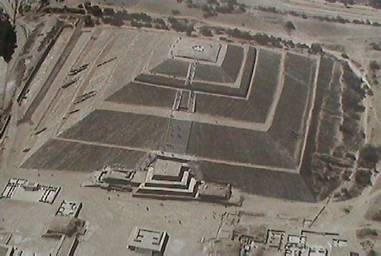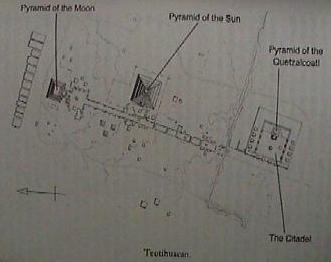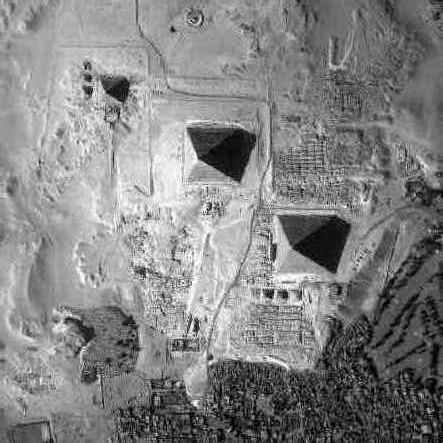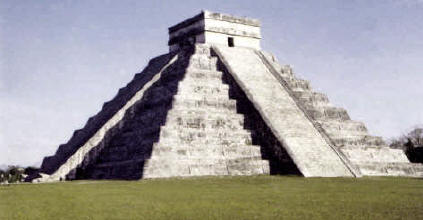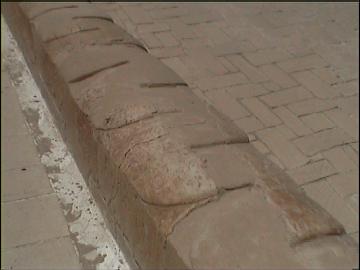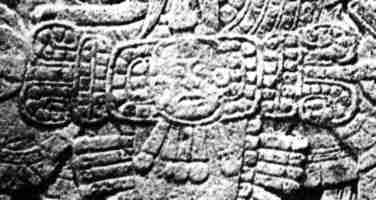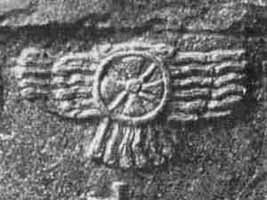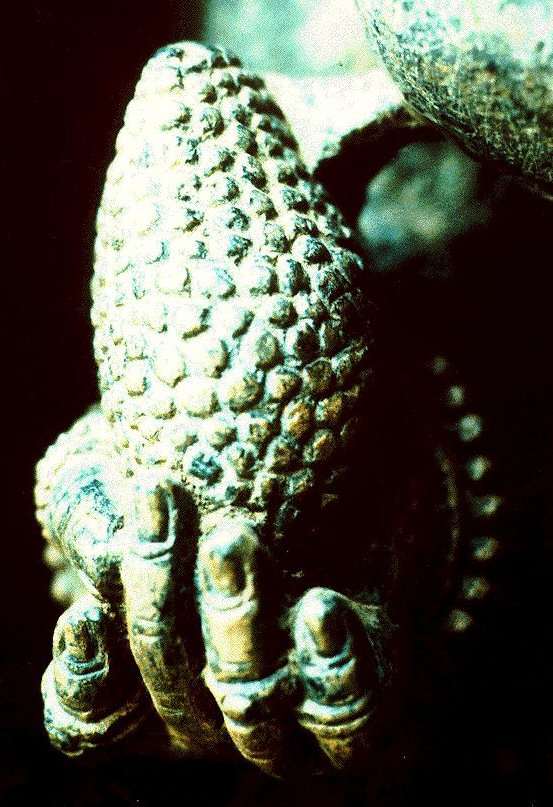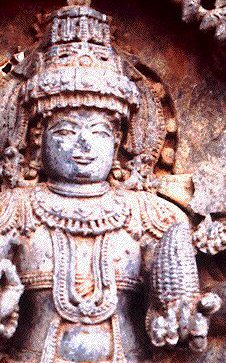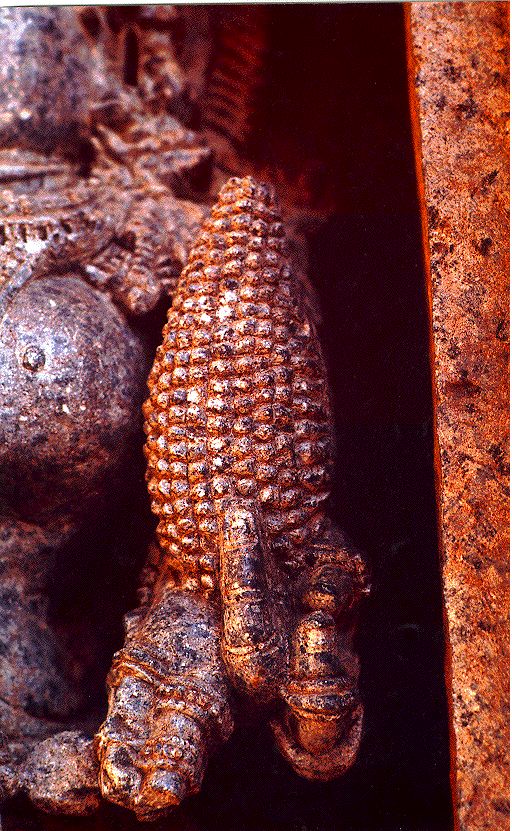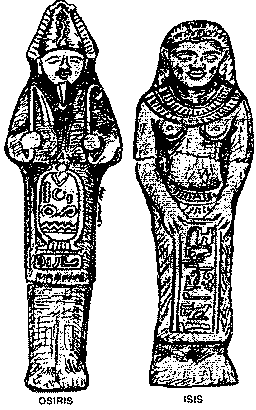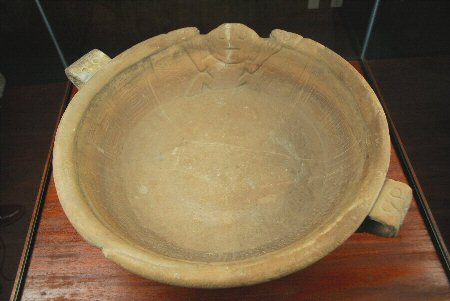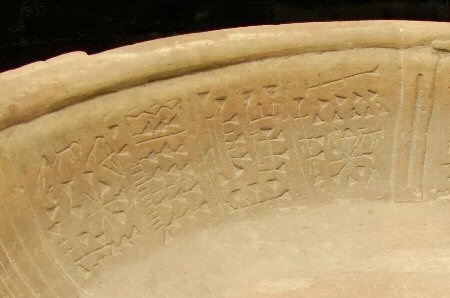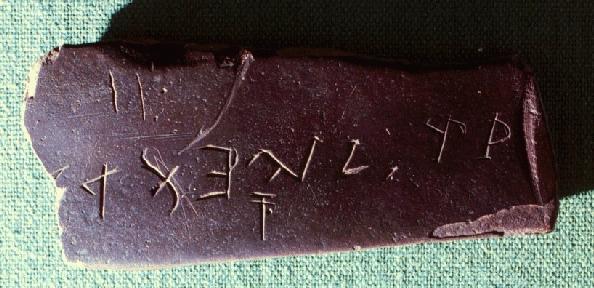|
 Old World
- New World Contact: Old World
- New World Contact:
This page
covers the various attempts to confirm contact between known 'Old-world' cultures, and the
Pre-Columbian 'New-World'. At present (2012), only one instance
of pre-Columbian European contact � the Norse settlement at
L'Anse aux Meadows in Newfoundland, Canada c. 1000 AD � is
regarded by scholars as demonstrated.
(14)
Without exception, every other
discovery, artefact and every one of the hundreds of scientific
articles supporting them are refuted.
Quick-Links.
Article: ColumbusDespatch.com (May,
2013)
'The
largest ever genetic study of native South Americans identified a
sub-population in Ecuador with an unexpected link to eastern Asia.
The study, published in PLOS Genetics,
concluded that Asian genes had been introduced into South America
sometime after 6,000 years ago � the same time the Jomon culture was
flourishing in Japan.
Back in
the 1960s, the renowned Smithsonian archaeologist Betty Meggers
argued that similarities between the pottery of the contemporaneous
Valdivia culture in Ecuador and Japan�s Jomon culture indicated that
Japanese fishermen had �discovered� America about 5,000 years ago.'.
(Link
to Full Article)
|
European
Cultural Connections: |
At present
(2012), only one instance of pre-Columbian European contact �
the Norse settlement at L'Anse aux Meadows in Newfoundland,
Canada c. 1000 AD � is regarded by scholars as demonstrated.
(14)
The Copper 'Reels' / 'Ox hides'. :
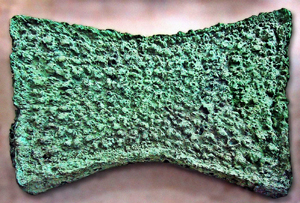
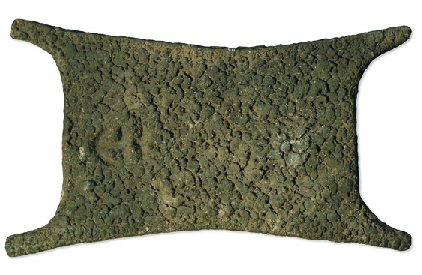
Copper ingot from Crete (Left), and a British
Museum Ingot from the 'Foundry Hoard' at Enkomi, Cyprus c.
1225-1150 BC (Right).
American sites have yielded considerable numbers of copper tablets shaped
like the hide of an animal; and they were named 'reels'. In 1896, in
Cyprus, and subsequently in many Mediterranean excavations, corresponding
'Bronze Age' copper objects, recognised now as ingots used in
international currency, have been found. The American examples suggest an
international trading system existed.
(1)
Frank Joseph shows images
of Ox-hide ingots from Pre-Inca Peru
(13, p51),
he goes on to say:
'The [Ecuadorian] Canari produced and
handles a copper currency known to the Spaniards as
hachuelas,
or "axe-monies", in the shape of axe heads, mushrooms and ox hides.
examples by the kilogram have been found and many are today preserved in
private collections or public museums throughout Peru, Ecuador and
Mexico' .... 'A sixty-pound copper ox hide was discovered near Lake
Gogebic, in Michigan's Upper Peninsula. The Mitchigan State Museum in
Lansing displays a much smaller ox hide-shaped stone anciently used as a
medium of exchange similar to the Canari hachuelas'.
The Piri Reis Map: The First Map of The
Americas?.
The significance of this map is
sometimes overshadowed by the various myths and claims surrounding it.
Regardless of the debatable claim that the map shows the outline of the
Antarctic continent, there are certain demonstrable facts which make
this map potentially one of America's most valuable historical relics.
The Piri-reis map (c. 1513), is
a fragment of a larger composite map of the world, with its epicentre in
Egypt. It was created with a working understanding of longitude and
latitude and a system of geometry which allowed the cartographer to
accurately draw the outlines of Africa and America relative to each
other.
The legend on the map dates it to 'Muharran' in the Muslim year 919 (1513 AD), only 20
years after the official discovery of the Americas by Columbus in
1492. The legend itself however, gave claims an origin far
older than 20 years, revealing that it was a section of a world map
composed from more than twenty source maps, some drawn in the time
of Alexander the great, and that 'some were based on
mathematics'
(7).
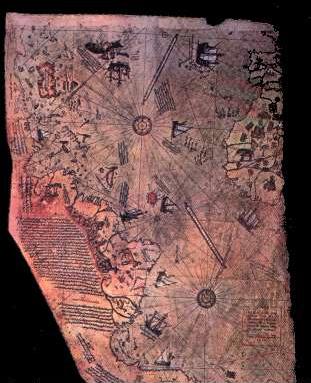 The
map has pre-Columbian provenance. The
map has pre-Columbian provenance.
The map shows the eastern coastline of America.
The map shows accurate use of Longitude
and Latitude.
The map-builders used 'Spherical
geometry'.
The centre of the map is at the junction
of the 23.5˚
parallel and the longitude of Alexandria.
The cartographers of the Piri-reis map used a system
called the 12-wind system, which was used extensively in the middle
ages and has its roots in the Babylonian sciences.
( More about
the Piri-reis map)
-
Diodorus says 'Over
against Africa lies a very great island in the vast ocean, many days sail
from Libya westward' (Book V, Chap ii). The Phonecians, he
said, having built Gades, sailed along the Atlantic coast of Africa when a
ship was 'On a sudden, driven by a furious storm far into the main
ocean; and that after they had lain under this tempest for many days, they
at length arrived at this island'.
(10)
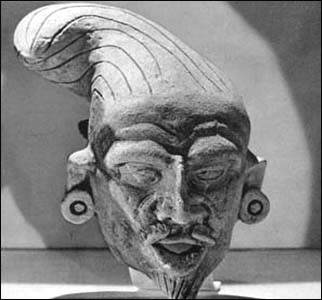
This realistic bearded
statue is Olmec, from
La Venta.
-
The Irish: Baldwin in 1869 cites a
note from the Abbe Brasseur's translation of the 'Popol-Vuh' in which he
said 'There is an abundance off legends and traditions concerning the
passage of the Irish into America, and their habitual communication with
that continent many centuries before the time of Columbus...An Irish
saint, named Vigile, who lived in the eighth century, was accused to Pope
Zachary of having taught heresies on the subject of the antipodes. At
first he wrote to the pope in reply to the charges, but afterwards he went
to Rome in person to justify himself, and there he proved to the pope that
the Irish had been in communication with a trans-Atlantic world'. This
fact seems to have been preserved in the records of the Vatican.
(10)
-
The Basques, being
adventurous fishermen, and extensively engaged in the whale fishery, were
accustomed to visit the northeast coast of America long before the time of
Columbus, and probably "from time immemorial". (See Michael's "Le Pays
Basques," and De Bourbourgs introduction).
(10)
-
The Welsh annals
tell us that the prince
Madog, about the year 1170 AD, 'sailed away westward, going south
of Ireland', to find refuge from the civil war among his countrymen.
We are told that he found the land he sought. Having made preparations for
a settlement, he returned to Wales, secured a large company that 'filled
ten ships', and then sailed away again, and 'never returned'.
In 1660, the Rev. Morgan Jones, a Welsh clergymen, seeking to go by land
from South Carolina to Roanoke, was captured by the Tuscarora Indians. He
declared that his life was spared because he spoke Welsh, which some of
the Indians understood; that he was able to converse with them in Welsh,
though with some difficulty; and that he remained with them four months'.
(10)
'When were the Azores
first Populated':
The recent report by the President of the
APIA has opened the floodgates to the perception of prehistoric
activity on the islands. With archaeological discoveries having
been made on most of the nine islands, there is now no doubt
that they were occupied in the past. Similarities to Greek and
Carthaginian remains are of particular interest as coins from
the same period had been previously discovered on the island of
Corvo (2)
(The Azores: A Case for
Pre-Columbian Contact.)
| African
Cultural Connections: |
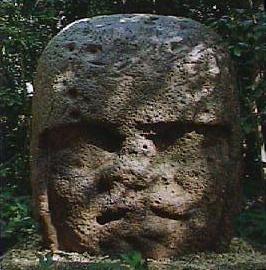
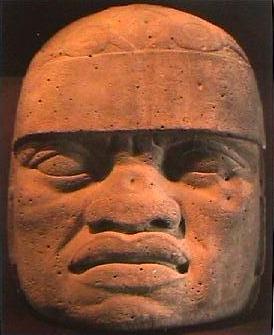
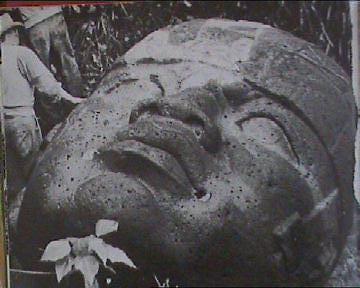
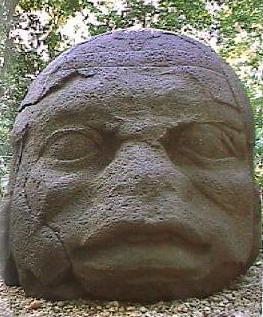
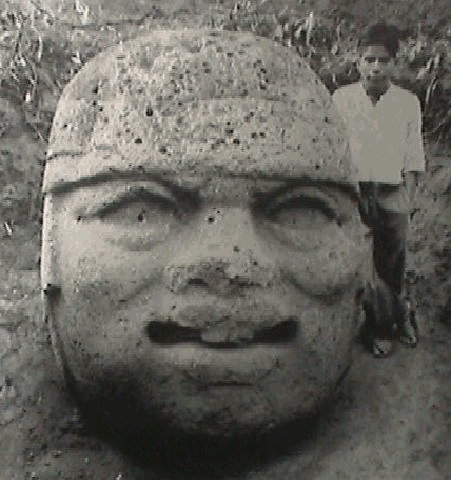
There have been several previous attempts to prove
the 'fusion' of African and native Pre-Columbian American races. Evidence
has been put forward ranging from linguistics, plant geography, skeletons, terracotta figures and even
North African 'Tifinag' inscriptions on the Virgin Islands.
(3) However,
nowhere is the evidence for this argument stronger than at La-Venta and San
Lorenzo, where
several large stone heads and have been discovered that clearly display Negroid
features.
 The huge proportions of the heads demonstrates that
they were influential people, and their association with the Olmec culture at
around (1,200-600 B.C.) places them long before the Maya, Inca or Columbus's
arrival in America. Van Sertima concluded that these people originated from
Egypt and the middle-east. The huge proportions of the heads demonstrates that
they were influential people, and their association with the Olmec culture at
around (1,200-600 B.C.) places them long before the Maya, Inca or Columbus's
arrival in America. Van Sertima concluded that these people originated from
Egypt and the middle-east.
The first rumours of large stone-heads in
Tres Zapotes
came from as early as 1858, but it was in 1938 that Dr. Stirling uncovered
the first head, which was made from a single piece of basalt rock resting
on a prepared foundation of un-worked slabs of stone. He said of it that it
was:
'...unique amongst aboriginal American
sculptures, it is remarkable for its realistic treatment. The features are
bold and it is amazingly negroid in character'.
The head was found 10 miles from the
source of the stone and a long slab of stone which was found at the same
site yielded a precise date of Nov 4th. 291 BC. As digging increased in
south America other larger heads and earlier heads were found at sites
such as La Venta, which began to reveal a chapter of history in the
pre-Columbian Gulf of Mexico that was almost lost to us. The La Venta
heads showed several similarities to the Tres Zapotes heads, and it
emerged that they dominated the ceremonial plaza, a feature which suggests
that they were in some way 'revered'. Four heads were found at La Venta,
all of them faced the Atlantic, and the largest at 9ft high had its domed
top flattened so that it could function as an altar. A speaking tube was
found going in at the ear and out at the mouth; a possible oracle or
talking god. Radio carbon dates from the site were published in 1957 and
they give an average reading of 814 BC +/- 134 yrs. These figures
were among the oldest at the La Venta site.
La Venta was not alone in its depiction
of Negroid faces in stone. Apart from the four found there, two were
excavated in Tres Zapotes and a further ten at San Lorenzo in Vera Cruz,
one of which, the largest known, is nine feet, four inches high, and is
estimated to weigh around 40 tons
(3).
The
theory forwarded by Van Sertima
reinforcing the theory that the 'Olmec'
sites of La Venta and Tres Zapotes were
governed by Negroid Africans and Middle-eastern Caucasians between 800-600 BC.
Craniology: In 1972, craniologist Andrzej Wiercinski reported
that 13.5% of the 76 fragmentary crania from Tlatilco, a site
associated with the Olmec civilization, showed "a clear prevalence of
the total Negroid pattern" (Jordan 1992). Wiercinski measured the
skulls for 48 morphological traits, but focused on the traits he
considered best for discriminating between the "three great races of
man" (Van Rossum 2004). The remains were dated to the Pre-Classic
Period
(1,500 BCE-300 CE), well before the arrival of Columbus.
(3)
African Skeletal
Remains In Mexico:
http://bafsudralam.blogspot.com/2009/10/dr.html
The Mali Empire: Perhaps more than
coincidentally, North African sources describe what some
consider to be visits to the New World by a Mali fleet
in 1,311. (15)
According to these sources, 400 ships from the Mali
Empire discovered a land across the ocean to the West
after being swept off course by ocean currents. Only one
ship returned, and the captain reported the discovery of
a western current to Prince Abubakari II; the off-course
Mali fleet of 400 ships is said to have conducted both
trade and warfare with the peoples of the western lands.
It is claimed that Abubakari II abdicated his throne and
set off to explore these western lands. In 1324, the
Mali king Mansa Musa is said to have told the Arabic
historian, Al-Umari that "his predecessors had launched
two expeditions from West Africa to discover the limits
of the Atlantic Ocean."
Genetics: According to the findings of a
Dr. de Garay, the director of the Genetic Program of the National
Commission of Nuclear Energy in Mexico. Dr. de Garay identified the
malaria resistant mutant gene, that produces sickle cells, in the
blood of the Lacandones Indians, one of the oldest and most secluded
tribes in Mexico. This tribe, of Mayan stock, who inhabit the
forests of the upper waters of the Usumacinta river have not been
known to mix with outsiders in post-Columbian times yet they possess
a gene that is �usually found only in the blood of black people.�
(19)
The following
comment by F. Hayes Ph.D. is also very telling. In 1854, at the
National Emigration Convention of Coloured People, held in
Pittsburgh, Pennsylvania, a statement was issued to the African
inhabitants of the United States of America regarding the necessity
for leaving the USA as the only alternative left for them. Within
that statement was the following observation:
'And among
the earliest and most numerous class, who have found their way
to the new world, were those of the African race. And it has
been ascertained to our minds beyond a doubt, that when the
continent was discovered, there were found in the West Indies
and Central America, tribes of the black race, fine looking
people, having the usual characteristics of colour and hair,
identifying them as being originally of the African race' .
(20)
Article: GambiaEcho
(2011). 'Africans in Pre Columbian America'. ( Quick-link)
(The Olmec
Stone-Heads)
(Olmecs Homepage)
|
Middle-Eastern Cultural Connections: |
The Mystery of the
'Cocaine Mummies'.
In 1976 a German scientist, Dr Svetla Balabanova, made a
discovery which was to baffle Egyptologists, and call into question
whole areas of science and archaeology to chemistry and botany.
She discovered that the body of
Henut Taui contained large quantities of cocaine and nicotine. The
surprise was not just that the ancient Egyptians had taken drugs, but
that these drugs come from tobacco and coca, plants completly unknown
outside the Americas, unheard of until Sir Walter Raleigh introduced
smoking from the New World, or until cocaine was imported in the
Victorian era.
(Click
here for full transcript of video)
Following this discovery,
other experts began testing Mummies and discovered
Tobacco for example the substance was found in Mummies from the
British Musuem by their keeper Dr.Rosalie David. There was even some
found on the bandages of the great Rameses II himself by Dr. Michele
Lescaux. Another discovery in the mummy of
Ramesses II also led to suggestions of early contact. This was an
adult Lasioderma serricorne, a beetle also known as the 'tobacco
beetle'. It was first described in American dried plants in 1798 but
not recorded as a species until 1886. It may be of tropical origin
and has been found in Tutankhamun's tomb, Bronze Age Akrotiri and
Amarna. (16)
Article:
Ancient Egyptian Bibliography (AEB), Published by the
University of Leiden.
NERLICH, Andreas G., Franz
PARSCHE, Irmgard WIEST, Peter SCHRAMEL and Udo LÖHRS, Extensive
pulmonary haemorrhage in an Egyptian mummy, Virchows Archiv. An
International Journal of Pathology, Berlin - Heidelberg 427 (1995),
423-429. (ill.).
Report on the morphological and trace element findings of several
internal organs from an Egyptian mummy approximately dating from the
year 950 B.C. according to C-14-analysis. By use of a multidisciplinary
approach the authors succeeded in discovering evidence for severe and
presumably recurrent pulmonary bleeding during life. This was suggested
by the finding of massive haemosiderin deposits in the lung and a
selectively and markedly elevated level of iron in trace element
analysis of the lung tissue. Furthermore, an enhanced deposition of
birefringent particles in the lung tissue, without significant fibrosis,
was observed. The histological analysis of liver, stomach and intestine
confirmed the macroscopic organ diagnoses without evidence of any major
pathological processes. In addition, analysis for various drugs revealed
a significant deposition of tetrahydrocannabinol (THC), nicotine and
cocaine in several organs of the mummy. The concentration profiles
additionally provide evidence for a preferential inhalation of THC,
while nicotine and cocaine containing drugs seem to have been consumed
orally.
Hand-Shaped Incense Spoons:
Van
Sertima
(3)
mentions the presence of similar 'Hand
shaped incense spoons' in both
'Old-world' and 'New-world' cultures.
The
following two photos (below left and right), from
Denderra,
Egypt, are perhaps what Van Sertima
(3) is alluding to... although,
and I daresay its all in the eye of the beholder .. but while the tour
guide calls them 'incense burners', it looks
as though the contents of these 'incense burners'
are being inhaled.
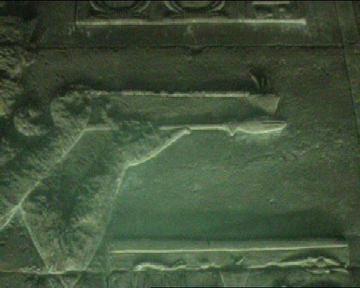 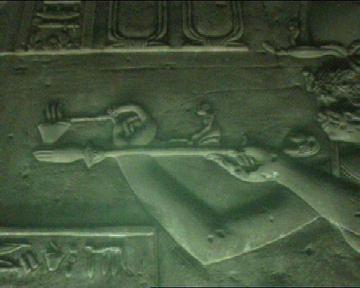
'Burnt Offering's' at
Denderra, Egypt.
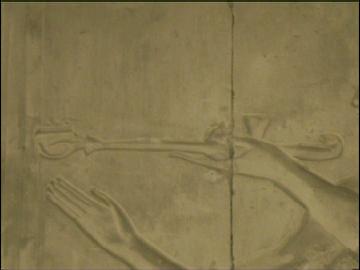
More 'burnt offering' from
Abydoss.
(Other examples of
Drug use in Prehistory)
|
The Model Aeroplanes:
It is perhaps just another one of life's
curious coincidences that these small aerodynamically sound 'models'
have been found in both South America and Egypt. Whatever the kismet,
they provide good food for thought.


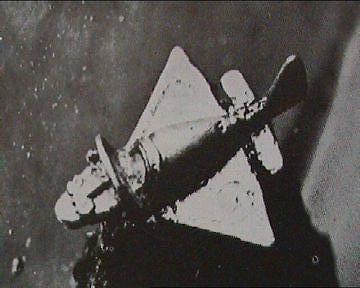
Egyptian 'model'
(left), S. American 'models'
(centre, right).

This
particular 'model' is on display in the Smithsonian Institute in
Washington DC. Its explanation states: �gold artefact, a stylised insect,
from the Quimbaya culture, Antioquia province, Columbia, ca. 1000-1500
AD.�
(More
about Prehistoric Flight)
|
|
Pacific Cultural
Connections: |
There have been several studies which have
proven to have substantiated the idea of a Pacific exchange with
Pre-Columbian Americans, as the following reports show:
Aboriginal American
cultivated cotton has been indicated to the satisfaction of botanists to
be a hybrid between Asiatic cultivated and American wild cotton. Cotton
was present in the lowest agricultural, pre-ceramic horizons of coastal
Peru. Carriage by human hands across the Pacific at this early period
would appear to be the only explanation. The other agricultural products
found in this earliest Peruvian agricultural horizon, beans and
cucurbits (squashes and gourds), are also of widespread occurrence in
both the Old and New worlds. (11)
Polynesian
Chickens in Chile:
'The most recent
theory on chickens is that they were domesticated from the red
junglefowl, probably in Thailand, and probably about 8,000 years
ago. They are believed to have reached the Polynesian islands about
3,000 years ago, brought by the Lapita expansion. A 2007 paper
written by Alice Storey and colleagues reports on excavations at the
site of El Arenal-1. El Arenal-1 is located in south central Chile,
and is part of the El Vergel Cultural Complex of horticulturalists,
dated between AD 1000 and 1500. Fifty chicken bones were recovered
from the site, representing a minimum of five birds. The bones
themselves were radiocarbon dated, and returned a calibrated age
range of AD 1304-1424. Most interestingly, DNA studies indicate that
these chickens were identical to chicken bones from two prehistoric
sites in the Pacific: Mele Havea in Tonga (2000-1550 years old), and
Fatu-ma-Futi in American Samoa, which dates to about the same period
as El Arenal'. (18)
Bark cloth is made of
the same or a similar bark by a very cognate process in Polynesia and
South America, and the product in Polynesia and South America, and the
product has a similar appearance. In both regions feather mosaics were
important and had a very like appearance, made by analogous processes.
(11)
Bottle Gourds:
The earliest bottle gourds (Lagenaria siceraria) have been
discovered in southwest Ecuador dated to 9,300 BP and they are
believed to have originated there. The bottle gourd appears in
Polynesia by ca. AD 1000. Molecular data suggests, but doesn't yet
prove, that the Polynesian bottle gourds are hybrids of the South
American and Indonesia forms.
(1 8)
Coconuts:
DNA studies of coconuts (Cocos nucifera)
growing today in Ecuador and reported by the
Spanish conquistadors indicates that they
originated in the Philippines, and were
brought to Ecuador by seafarers ~2250 years
BP (Baudouin and Lebrun 2009).
(18)
Totora Reed:
Totora reeds grow in South
America, particularly around
Lake Titicaca, but also on
Easter Island. These reeds
have been used by various
pre-Columbian South American
civilizations to build reed
boats. The boats, called balsa,
vary in size from small fishing
canoes to thirty meters long.
They are still used on Lake
Titicaca, located on the border
of Peru and Bolivia, 3810 meters
above sea level.
Sweet
Potato:
Sweet potato has been
radiocarbon-dated in the Cook Islands to
1000 AD, and current thinking is that it was
brought to central Polynesia around 700 AD,
possibly by Polynesians who had travelled to
South America and back, and spread across
Polynesia to Hawaii and New Zealand from
there. (22)
(More about the
Prehistoric Pacific)
Further Research:
Article: (2006) 'Sweet
Potato in Pre-Columbian Polynesia: An Overview'.
(Quick-link)
Article: (2007)
'Historical evidence for a pre-Columbian presence of Datura in
the Old World and implications for a first millennium transfer
from the New World'. (Quick-link)
| Oriental
Cultural Similarities: |
The Jomon
Culture:
Article: ColumbusDespatch.com (May,
2013)
'The
largest ever genetic study of native South Americans identified a
sub-population in Ecuador with an unexpected link to eastern Asia.
The study, published in PLOS Genetics,
concluded that Asian genes had been introduced into South America
sometime after 6,000 years ago � the same time the Jomon culture was
flourishing in Japan.
Back in
the 1960s, the renowned Smithsonian archaeologist Betty Meggers
argued that similarities between the pottery of the contemporaneous
Valdivia culture in Ecuador and Japan�s Jomon culture indicated that
Japanese fishermen had �discovered� America about 5,000 years ago.'.
(Link
to Full Article)
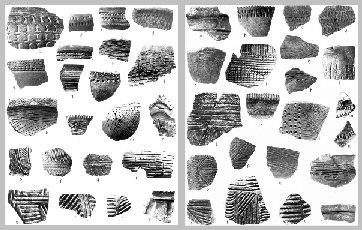 Japan:
The Valdivia Culture is one of the oldest settled cultures recorded
in the Americas. It emerged in Ecuador between 3,500 BC and
1,800 BC. The Valdivia culture was discovered in 1956 by the
Ecuadorian archaeologist Emilio Estrada. Based on comparison of
archaeological remains and pottery styles (specifically, the
similarity between the Valdivian pottery and the ancient Jōmon
culture on the island of Kyūshū, Japan) Estrada, along with the
American archaeologist Betty Meggers suggested that a relationship
between the people of Ecuador and the people of Japan existed in
ancient times. Japan:
The Valdivia Culture is one of the oldest settled cultures recorded
in the Americas. It emerged in Ecuador between 3,500 BC and
1,800 BC. The Valdivia culture was discovered in 1956 by the
Ecuadorian archaeologist Emilio Estrada. Based on comparison of
archaeological remains and pottery styles (specifically, the
similarity between the Valdivian pottery and the ancient Jōmon
culture on the island of Kyūshū, Japan) Estrada, along with the
American archaeologist Betty Meggers suggested that a relationship
between the people of Ecuador and the people of Japan existed in
ancient times.
Since then, it has been discovered that people living in the area,
and in SW Japan yet uncovered, both have a low rate of a virus not
known in other populations, HTLV-1.
(23)
Image Above:
Valdavian Pottery (left), Jomon Pottery (right)
-
The Pan-pipes of
Peru
and of early China show some astonishing
similarities, such as use in pairs, connected by string, with alternate
notes of the scales on alternate instruments.
(11)
-
In both regions [Peru
and China] a narcotic is chewed, betel-nut in the Pacific, coca in the
Andean region, and the alkaloid is released by mixing the quid with
lime. The gourd containers and the lime spatulas are of the same forms.
(11)
-
The Abbe de Boubourg says
in his introduction to the Popol-Vuh, 'It has been known to scholars
nearly a century that the Chinese were acquainted with the
American continent in the fifth century of our era. Their ships visited
it. They called it Fu-Sang, and said it was situated at the distance of
20,000 li from Ta-Han'. M.Leon de Rosny has ascertained that Fusang
is the topic of ' a curious notice in the
Wa-kan-san-tan-dzon-ye'
(which is the name of the great Japanese encyclopaedia). In that work Fusang is said to be situated east of Japan, beyond the ocean, at the
distance of about 20,000
li (7,000 miles or more) from Ta-nan-kouek.
(10)
|
An Australian Presence in Pre-Columbian America: |
A Genetic link has
been determined between the Aborigines of Australia and the 'Fuegian's'
from 'Tierra-Del-Fuego' in Southern-most America. This
suggests a connection at least 30,000 years old.
Article:
BBC. Science News.
(August, 1999)
'The first
Americans were descended from Australian aborigines, according to evidence in
a new BBC documentary. The programme, Ancient Voices, shows that the
dimensions of prehistoric skulls found in Brazil match those of the aboriginal
peoples of Australia and Melanesia. Other evidence suggests that these first
Americans were later massacred by invaders from Asia'.
(Link to full
article)
There is said to be a physical similarity between the 'La-Jollans'
of Southern California, who also used the spear thrower, had
initiation ceremonies for boys, with women excluded, the
twirling of a 'Bull-roarer', and with ground paintings involved. La
Jollan artefacts are apparently virtually indistinguishable from those of the Kartan culture of Australia.
(3)
(More
about The Australian Aborigines)
|


 The
map has pre-Columbian provenance.
The
map has pre-Columbian provenance. 













